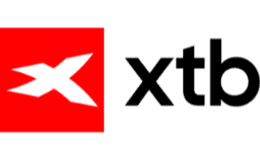
Fractional shares
Free to open an account
The Dow Jones and S&P 500 are both stock market indices designed to track the performance of markets. The Dow Jones is composed of 30 hand-picked large-cap stocks in the US, while the S&P 500 is 500 large stocks in the US. Both of these indices are selected by committees, with some criteria that a company must fit to be eligible — despite this, these indices are very different in their value, size and diversification.
The S&P 500 is a collection of 500 large-cap stocks on US exchanges while the Dow Jones is a collection of just 30 stocks.
Other than the number of stocks, a huge difference between the 3 is the way each index is weighted. The Dow Jones is price-weighted so stocks with higher prices have a larger impact on the whole index. The S&P 500 is a float-adjusted market-cap-weighted index. This means that each company’s size is measured by the stock price multiplied by the total number of outstanding shares and adjusted for a public float. Companies with a higher market cap have a larger impact on the overall index.
This depends on how you define “bigger”. It could be interpreted to mean the index with the larger number of stocks or the one with a higher market capitalisation, which is the total value of the stocks. When referring to the number of stocks, the S&P 500 is bigger with 500 stocks against the Dow Jones’s 30.
The S&P 500 has a market capitalisation of $36.7 trillion (about £30.18 trillion). Meanwhile, the Dow Jones has a market cap of $10.35 trillion (about £8.25 trillion). The company with the largest weighting in the Dow Jones is UnitedHealth, which has a market cap of $463 billion (£369 billion). The largest weighting in the S&P 500 is Apple with a market cap of $2.17 trillion (£1.78 trillion).
With 500 stocks, the S&P 500 is more diversified than the Dow Jones, which only has 30. However, the Dow Jones does have a good split of stocks across different sectors. Both the Dow Jones and the S&P 500 have a large number of stocks in the technology sector.
If you’re looking for diversification and you like the look of the Dow Jones, you could always add another index fund to the mix to get some global diversification.
These trading apps allow you to invest in companies within the indices directly or to invest in funds/ETFs.



Here are some of the best-performing S&P 500 and Dow Jones funds according to justETF:
| ETF | Icon | 5-year performance (to Jan. ’25) | 1-year performance (to Jan. ’25) | Link to invest |
|---|---|---|---|---|
| Invesco S&P 500 (SPXP) |  | 105.91% | 27.36% | Invest Capital at risk |
| Xtrackers S&P 500 Swap (XSPX) | 107.48% | 28.50% | Invest Capital at risk | |
| iShares Core S&P 500 (CSP1) |  | 103.02% | 26.69% | Invest Capital at risk |
| HSBC S&P 500 (HSPX) |  | 106.40% | 28.57% | Invest Capital at risk |
| Vanguard S&P 500 (VUSA) |  | 105.75% | 28.37% | Invest Capital at risk |
| SPDR S&P 500 ETF (SPX5) |  | 105.53% | 28.41% | Invest Capital at risk |
| Fund | Icon | 5-year performance (to Feb. ’24) | 1-year performance (to Feb. ’24) | Link to invest |
|---|---|---|---|---|
| Lyxor Dow Jones Industrial Average (DJEL) |  | 68.82% | 10.45% | Invest with IGCapital at risk |
| iShares Dow Jones industrial average (CIND) |  | 68.67% | 10.07% | Invest with eToroCapital at risk |
All investing should be regarded as longer term. The value of your investments can go up and down, and you may get back less than you invest. Past performance is no guarantee of future results. If you’re not sure which investments are right for you, please seek out a financial adviser. Capital at risk.
![]()
 | Apple |
 | Microsoft |
 | Johnson & Johnson |
 | UnitedHealth |
 | Visa |
 | Apple |
 | Microsoft |
 | Amazon |
 | Meta Platforms |
 | Alphabet Inc A (Google) |
The Dow Jones and S&P 500 are both US indices. They’re made up of stocks selected with basic criteria by a committee. With both indices, you can get access to some large-cap stocks on US stock exchanges. Many of the stocks on the Dow Jones are a part of the S&P 500, so you’d essentially be investing in both, bar a few stocks, by choosing the S&P 500.
All investing should be regarded as longer term. The value of your investments can go up and down, and you may get back less than you invest. Past performance is no guarantee of future results. If you’re not sure which investments are right for you, please seek out a financial adviser. Capital at risk.
Here’s your ultimate guide to navigating the world of global investing from the comfort of your sofa or even on your phone on the go.
The three best-known US indices go head to head. Search by company, review performance over time and understand key differences.
Learn how to invest in the Euro Stoxx 50 from the UK and discover some of the best Euro Stoxx 50 index funds and where you can invest in them.
Find out the key differences between the Nasdaq stock exchange and the S&P 500 index, along with their similarities and overlaps.
Find out more about the Nikkei 225, some companies that make it up and how you can invest in the Nikkei 225.
Find out what makes up the Hang Seng index. We’ve compiled the different ways that you can invest in Hang Seng, such as through ETFs.
Find out how to invest in DAX, the 40 largest companies on the Frankfurt Stock Exchange. We’ve compiled some ETFs and other ways you can invest.
In a nutshell, an index fund is a low-cost portfolio of shares and other assets that tracks a financial or stock market index. They’re a popular investment choice in the UK and worldwide.
Learn how to invest in the S&P 500 from the UK and discover some of the best S&P 500 index funds and where you can invest in them.
The FTSE 100 is the UK’s most famous stock index. Here’s how you can invest in it today.